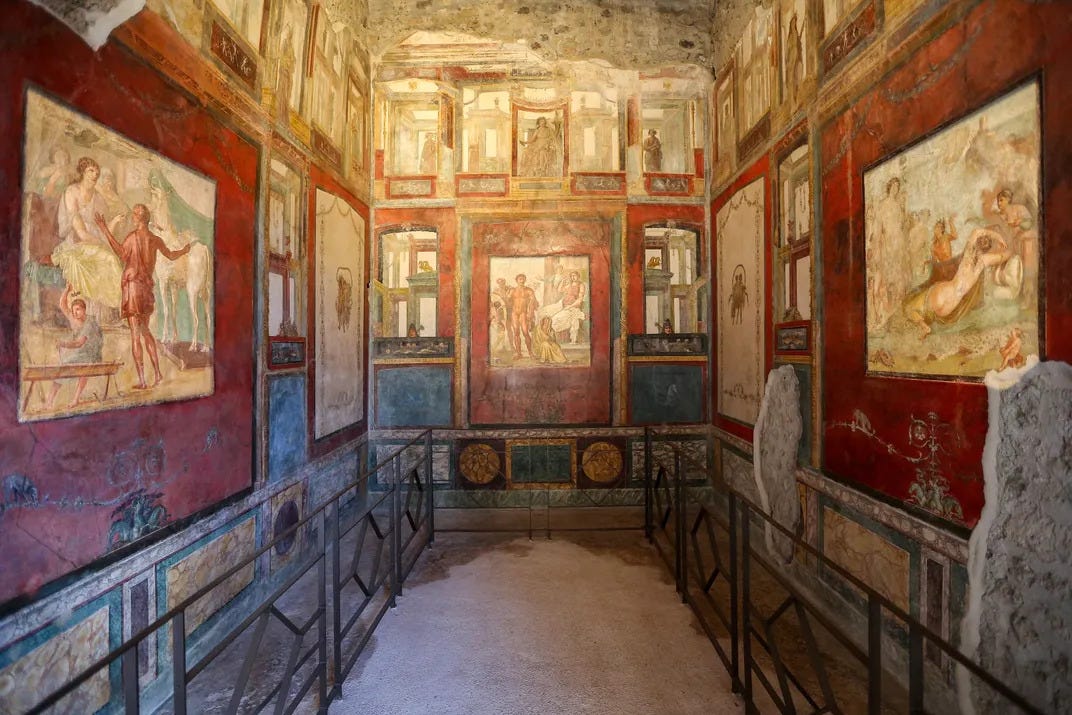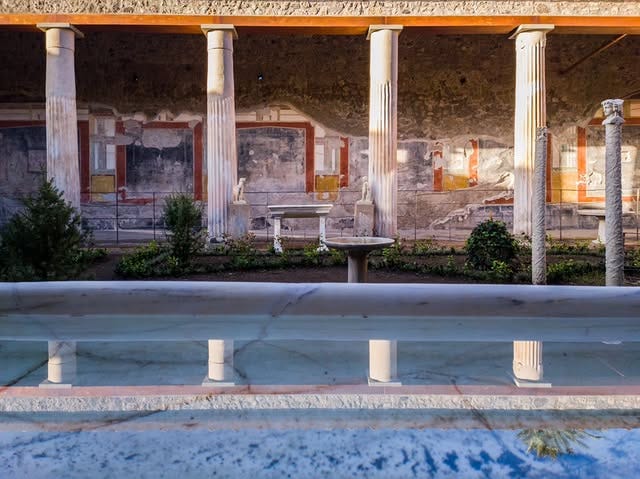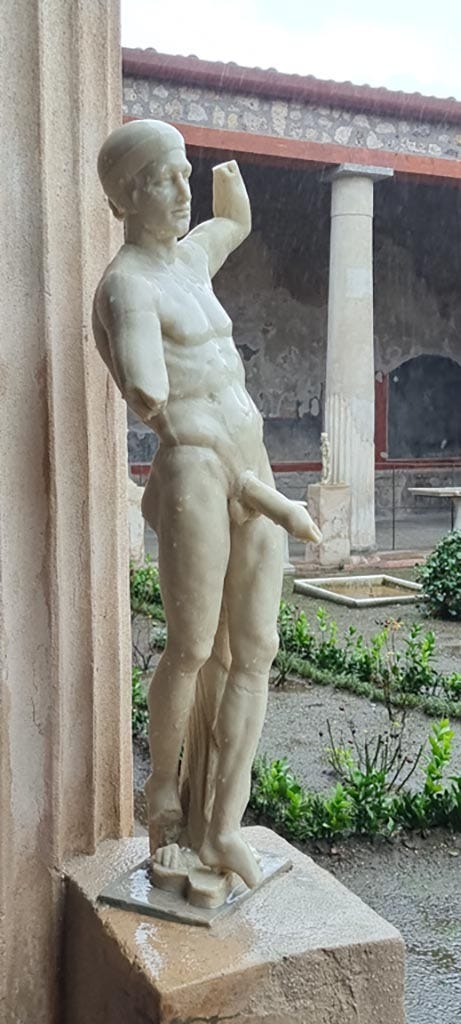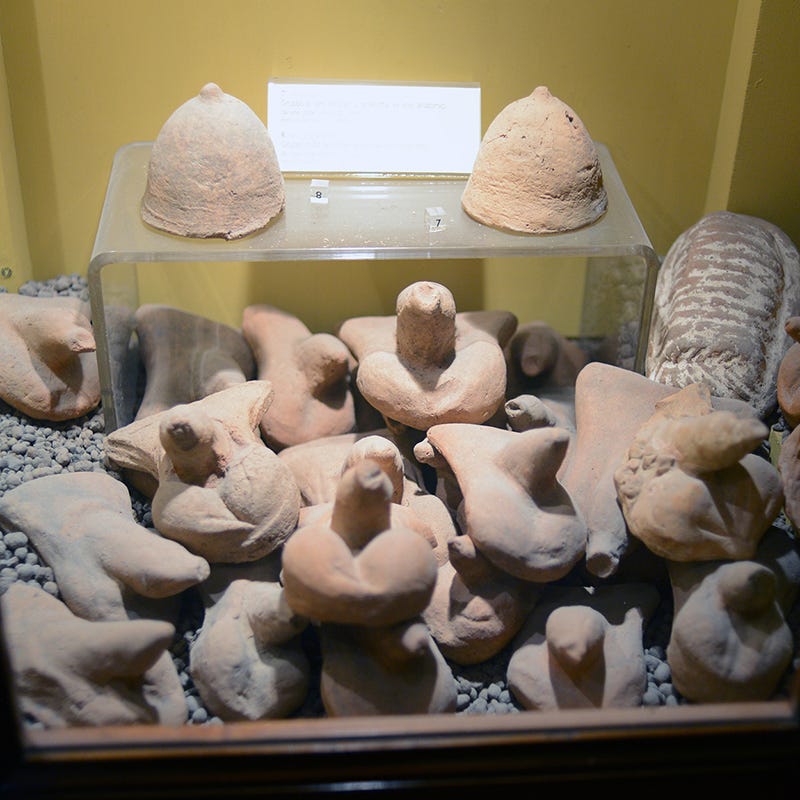Pompeii and Penises
Viewing the ancient city’s lack of sexual stigma through a contemporary lens
On an average Tallahassee morning, in an average high school classroom, being presented an average art history PowerPoint, I was introduced to the ruins of Pompeii. According to the College Board, the most important site in the 440,000 square meters of ruins is the House of the Vettii.
In contrast to other houses under other family names, the House of the Vettii offers a unique perspective into the Roman elite; the Vettii brothers were two former slaves who rose to wealth through the wine trade. The house was built in the second century AD, notably later than most of the preserved houses are estimated to have been built. Therefore, this beautiful piece of architectural and artistic preservation allows for a unique look into the culture of the Roman Empire.
I have never been particularly interested in the Roman Empire. I found the amount of testosterone-driven art to be overwhelming and callous; every sculpture and fresco seemed to center around war and alcohol. The gorgeous marble carvings on “Augustus of Prima Porta” and the towering pose of the “Equestrian Statue of Marcus Aurelius” look beautiful, yet the interpretations all boil down to “power is good, being a loser is bad.”
However, the House of the Vettii is different. It was a home, a place where real people with real life stories lived. The walls of every room are covered in well-preserved frescoes, and the garden is full of tiny white statues. These pieces of art were not meant to be displayed in an amphitheater, forum, or library; they are refreshingly personal.
They are also chock-full of nudity.
Nudity in ancient Roman art
Nudity in ancient Roman art has many different purposes. One such purpose is to emphasize the beauty of the human body. In Roman culture, the human body without clothing was seen to be divine and perfect rather than something risque or offensive. Roman culture was also rooted in reverence and respect for their mythology; thus, gods and goddesses were commonly represented in the nude in correspondence to this divinity.
Mythological nudity was commonly placed in frescoes on the walls of the triclinia (dining rooms), for this type of art was seen as a way to elevate a space for intellectual conversation and aesthetic appreciation. This was a way for the Vettii family to show off their taste and education: they had nude Cupids painted engaging in various occupations to display the hardworking nature of the household.
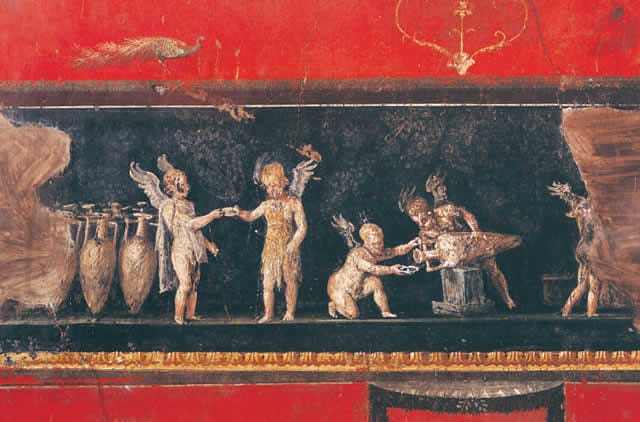
The House of the Vettii also features blatantly erotic imagery front and center in the entrance to the home; the fresco of Priapus, a god of fertility, features the god weighing his enormous phallus next to a sack of money. This image links sexuality to success, but some of the art within other houses is much less symbolic. For example, the House of Centenary contains a room filled with frescoes depicting sexual intercourse between a man and woman, presumably meant to inspire the couple residing in the room.
Prior to the rise of Christianity and the subsequent increase in modesty, Roman society was very comfortable with nudity in both public and private art. Naked figures, both male and female, suggested freedom and ecstasy, potency and wealth, along with divine and heroic identity. The naked human figure was praised rather than blushed at, and this ideal was slowly extinguished due to the impact of modesty on the Western world.

The Western view of sexuality in art
Medieval Europe (5th–14th centuries) was a Europe brimming with traditional Christian ideals that viewed sexuality as a temptation that needed to be eliminated. Modesty was upheld as something pure and holy; this is seen in depictions of Mother Mary, who is consistently draped in swathes of fabric to emphasize her humility. However, nudity was still depicted, but it was only done in the context of sin and torment in Hell, associating nakedness with shame and punishment.
The Renaissance (14th–16th centuries) revived the use of classical nudity in art, but artists had to balance this with Christian morality. Nudity was only acceptable in the context of an idealized body; for example, Sandro Botticelli’s “The Birth of Venus” which is framed in a mythical narrative with Venus as a bashful subject, and Michelangelo’s “David” which emphasizes biblical courage through an exaggerated human form.
This period caused many artists to walk a thin line between acceptable and unacceptable nudity. Naked bodies were extremely frowned upon in religious settings or when used to display an uncouth level of eroticism, so many controversies arose when artists tried to push these boundaries (i.e., Michelangelo’s nude figures on the ceiling of the Sistine Chapel).

With the rise of bourgeois morality in the era of Realism (mid-to-late 19th century), there was conflict between the ideals of Realism and the virtues of the upper-class patrons. Artists in this movement desired to depict life with all of its grittier aspects, so much of this art was censored when displayed in public areas or museums.
This is because nudity was no longer mythological, as in the Renaissance period. It was depicted in a realistic, working-class setting without fancy lighting and vibrant colors to distract from the intricacies of the human body. Many artists attempted to return to the style seen in the intimate frescoes within the walls of Pompeii, but they were dissuaded from doing so by those who were funding them.
A prominent example of the bourgeois’s hypocrisy is the Secret Cabinet, a collection of erotic artifacts from the ancient cities of Pompeii and Herculaneum, that resides in the National Archaeological Museum in Naples, Italy. Just as Realist artists struggled to evade censorship when depicting raw nudity, the Secret Cabinet’s history reveals a broader fear of unidealized sexual imagery, even when it is presented through a historic lens.
The room was labeled as “obscene,” and only “mature and moral” individuals were allowed access — also known as rich, white men. It was thought that if a child or, God forbid, a woman were to enter this room and witness the crudely sculpted acts of intercourse, they would become forever internally corrupted.
The Cabinet had a brief moment of reopening in the late 19th century, but this was quickly shut down by the growing fascist presence in Italy. Ironically, this leadership believed in classical Roman ideals whilst suppressing the lewd art of Pompeii that didn’t align with their moralist standards.
However, sexuality was not completely banned from art. In the late 19th to early 20th century, nudes of female mythological figures were modestly posed in a way that framed their bodies as something they were bashful of rather than proud. This is why the association between sexuality and morality not only affected the aggressively lewd sculptures of Pompeii or the unsightly nudes of the Realism period, but it also affected pieces of implied sensuality.

Appreciating the beauty of the human body
The day I first saw the “Portrait of Madame X” by John Singer Sargent is a day I will never forget. I was walking through the Metropolitan Museum of Art for the first time, and I had no clue where I was going. I didn’t glance at a single map or diagram of the labyrinth of a museum. I simply allowed myself to enter each room without a clue of what was going to be behind the stark white walls.
This is how I came across Madame X. I entered yet another room after the tens I had entered already. My feet hurt, but my heart ached vigorously to witness more beautiful art. I walked into Gallery 899 of the American Wing, and I was immediately enraptured by her.
The portrait is a commanding seven feet tall and was placed directly in front of the doorway. The muse is posed in a powerful stance. She is positioned alongside a small table, with one hand loosely gripping this table and one slightly lifting her lengthy gown. Her posture is imposing, as she looks to her left in a very low-cut black dress that showcases her lengthy, pale arms and slim figure. Her auburn hair is in a loose updo, and her pale face is emphasized by her brown eyeshadow and dark red lipstick.
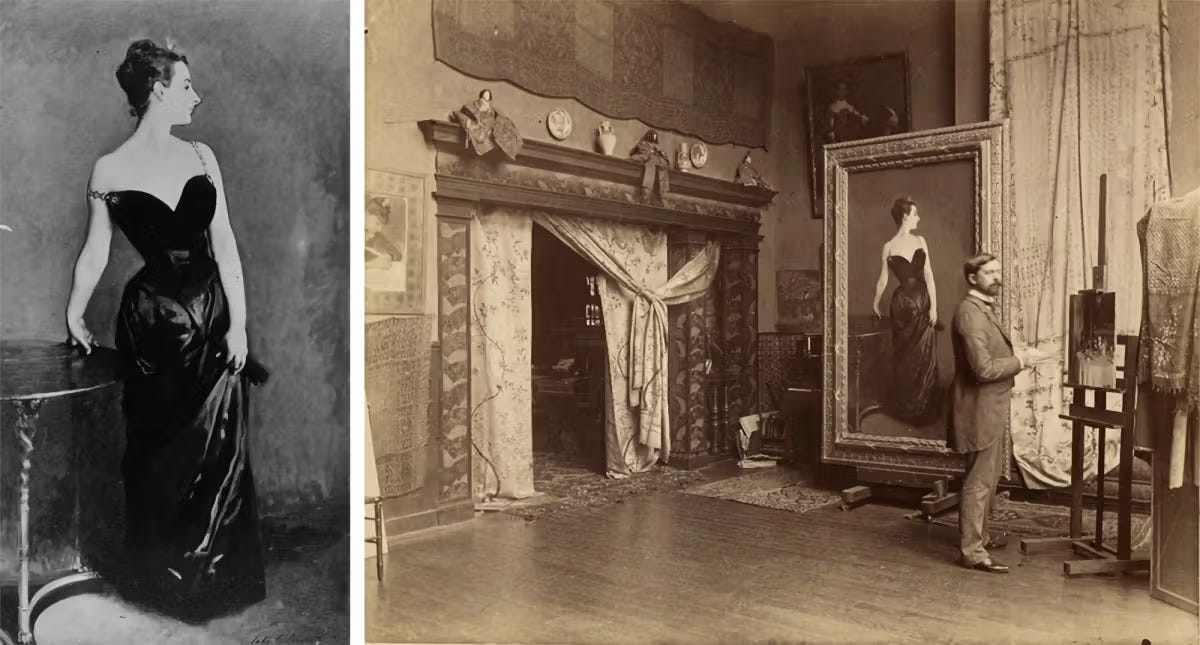
Given this description of Madame X, it would be hard for one to assume her story is more complicated than your average upper-class client. Still, there is a reason she is called Madame X; when Sargent premiered this painting at the 1884 Paris Salon, it shocked the attendants. Madame X is fully clothed, but, to the horror of the bourgeois audience, one of the dainty gold straps of her dress was promiscuously falling off her shoulder. Because of this minuscule detail, Sargent felt he had to paint over the askew strap to make sure Madame X’s dress was firmly affixed to her figure.
This painting, although much more modest than the frescoes of Pompeii, taught me the most about appreciating the beauty of the human body. I saw a figure of strong feminine sexuality who looked a lot like me: the crookedness of her nose, her ashen skin, the color of her lips, and the hidden curls fraying from her tight auburn up-do. Regardless of how unsexual this painting appears when put alongside the figures of the Romans, the woman speculated to be Madame X was shamed for looking like a prostitute solely because she was painted as a woman who exudes power in her sexuality, something the artists of Pompeii rarely shied away from.

In Pompeii, female sexual activity and desire were not taboo; they were accepted as an aspect of everyday life. Unlike most of the acceptable nudity in the Western world, women were often shown as participants in, not only objects of, sexual acts. The erotic frescos of the Lupanar (brothel) show women holding the power in acts of intercourse, often being placed on top of the lying male participant. Depictions of Venus abstain from covering any part of her unclothed figure. Women were encouraged to be proud of their bodies, publicly and privately.
Disgust, fear, and hatred arise when art causes any discomfort. Rather than confront this discomfort, wealthy patrons throughout history have decided to censor creations that confront their misplaced morals. Overtly sexual art has the ability to empower an audience constantly surrounded by gallery walls full of bedazzling Christianity. In my experience, it shows me that the nude female figure isn’t something to be afraid of. Rather, it’s most beautiful when paired with a confident pose.



